- Maria Santisteban
- https://www.uncp.edu/profile/dr-maria-s-santisteban
- Professor
- Expanding Career Pathways for Academically Talented Biology and Chemistry Undergraduates by Combining Financial Support with High-Impact Co-curricular Services
- https://www.uncp.edu/departments/biology/compass-scholarship-program
- University of North Carolina Pembroke
- Rebecca Bullard-Dillard
- Professor
- Expanding Career Pathways for Academically Talented Biology and Chemistry Undergraduates by Combining Financial Support with High-Impact Co-curricular Services
- https://www.uncp.edu/departments/biology/compass-scholarship-program
- University of North Carolina Pembroke
- Rita Hagevik
- https://www.uncp.edu/profile/dr-rita-hagevik
- Professor, Dir. of Graduate Sc. Education
- Expanding Career Pathways for Academically Talented Biology and Chemistry Undergraduates by Combining Financial Support with High-Impact Co-curricular Services
- https://www.uncp.edu/departments/biology/compass-scholarship-program
- University of North Carolina Pembroke
Public Discussion
Continue the discussion of this presentation on the Multiplex. Go to Multiplex



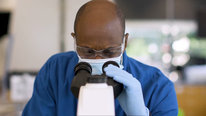
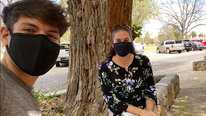
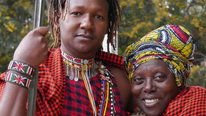
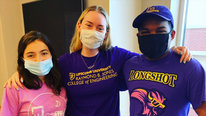
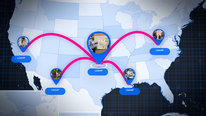
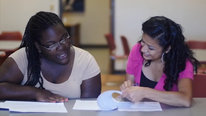
Marisol Santisteban
Professor
Hello and thank you for stopping by and watching our video: Unlocking Pathways at UNCP: A COMPASS for STEM Students. This was our first year of the COMPASS2 program and due to the pandemic, we had to make adjustments. Some of these adjustments turned out to be quite positive, like virtually being able to host speakers from literally around the world.
We started with a group of 11 talented, freshmen or transfer students, with demonstrated financial need, most of whom belong to underrepresented groups. UNCP was created to serve the Native American community and still today over 17% of our students are from the Lumbee or other Native American tribes. The minority serving aspect of our institution is reflected in the composition of our first cohort (36% Native American, 27% African American, 18% Hispanic, 18% Caucasian). We seek to promote equity and broaden impact by making college affordable and providing these students with opportunities to develop a science identity and awareness of STEM careers.
The pandemic has further exposed the gap between students with the adequate support (financial and academic) and those without (many of our financially disadvantage students have to work in essential jobs to be able to afford college). COMPASS2 has been a great equalizer for the students whom we have found thrive in a strong support network.
We would love to hear your feedback on our work. In addition, we are very interested in starting a conversation with those who face similar challenges as we do in a rural community serving historically marginalized groups and we would like to know:
Katie Sandlin
Rita Hagevik
Professor, Dir. of Graduate Sc. Education
Hello everyone and welcome! We look forward to your input and this great discussion! Rita
Patricia Marsteller
Professor of Practice Emeritus
Love your project....It would be great to hear how you coped with Covid and how you address the acess issues? Do you use any of the aspects of the Entering Research curriculum?
https://wiscience.wisc.edu/program/entering-res...
There are lots of materials and case studies that might be helpful for your students.
Maria Santisteban
Rebecca Bullard-Dillard
Professor
We had to do a few things to work around Covid restrictions. We were not allowed to do focus groups face-to-face per our IRB, so did them virtually. We could not travel with the students, so we did a virtual conference and we took a couple of laboratory field trips to on-campus facilities that were open (had to use several vehicles to allow distancing in the vans/cars. Our weekly seminars were held in a classroom that was large enough for appropriate distancing and had WebEx/Zoom capabilities for allowing panel participants to join us.
With regard to your information about the ERC, we did not specifically set out to follow that particular curriculum but it, since it does include a number of understood best practices, we have already begun implementing most of the recommended list of goals. Thank you for sharing the site. It will be very useful for us.
Marisol Santisteban
Professor
Hi Patricia!
Thanks for stoping by and watching our video!
We were fortunate that our institution did not go entirely virtual in the fall 2020. There were moments when the infection rate was high among students but we managed keeping some form of F2F as long as distancing, masking, etc. were practiced. We had a group of 11 students and we were able to meet every Friday as a group (students enrolled in a 1hour credit class to ensure that everyone was available at the same day/time). We had different topics: time management, Bloom's Taxonomy, Metacognition strategies, Myers Briggs, What is Science, Scientific Thinking, Importance of Science Communication, Leadership Development, CV & Resume, etc.
Students were also able to meet with their mentors (they all paired one-on-one with a mentor in Biology or Chemistry) either F2F or online as you see in the video.
The one thing the COVID changed from the way we had planned is that we could not do site visits to STEM workplaces or graduate schools. The goal of these is to expose students to role models and develop awareness of different careers in STEM. In a past program we would tour places and typically would have also a round table or panel with professionals, graduate students, post-docs, etc. telling our students about their career paths, that were always anything but what they thought as freshman in college :). We were very sorry this group of COMPASS2 students started their journey with the pandemic and could not go into these trips. So we brought the professionals to them virtually, there were no tours, but we had access to people anywhere in the world literally. We just had a panel on "Conservation and Wildlife careers" where one of the speakers was from University of Reading (UK).
We also provided tutoring/study hall since the transition to college is a difficult move for our first generation students from rural high schools. We have experimented with models and went through various tutors till we have found a good rotation pattern. Our students also had a in person math boot camp (20 hours) before entering the program, because strong math foundations are one of the single best predictors fro succes in STEM courses. We plan to include chemistry based on the results of this first year.
Students were still able to attend one conference (the NC Academy of Science Annual meeting), albeit online, and this to be honest was a bit hard for a first conference. We prepared them as much as we could: preview titles of presentations, selecting which ones to attend, prepare questions, etc. but it was a bit overwhelming for a first conference. They still got very impressed that undergraduate students were doing and presenting research work and it was inspirational. We hope next year they will be able to attend in person (we make it "mandatory" to attend this one since is regional and travel is easy and it is very undergraduate friendly) and maybe a few we'll get to present!
We have not used the Entering Research Curriculum yet because this year was their freshman year and only in the second semester some have started to consider research. Also, the pandemic reduced the opportunities fro research. I myself maintained some in silico research with GEP materials (video 2184) but did not involve any of the COMPASS students. We will be implementing some aspect of that curriculum for sure this coming year. Thanks for the suggestion!
In summary we were fairly fortunate logistically, but without a doubt the pandemic has taken a toll in the first year college experience.
Thanks again!
Rita Hagevik
Professor, Dir. of Graduate Sc. Education
Thank you for the research idea! Our students have diverse interests in the sciences so a generalized curriculum like this one is a great idea! I love the idea of using case studies too. There are many great case studies online that we can discuss. Thank you for these tips! Rita
Rebecca Bullard-Dillard
Professor
By the way, I didn't identify myself for the discussion threads yet. Thank any and all of you who drop in to our presentation and interact with us. I look forward to all of the good idea exchanges that will occur.
Alexa Sawa
I am eager to hear how effective the additional support was for your students. I am curious about what you did to recruit applicants to your program. We have had trouble getting students to apply for a program we have to support STEM students.
Maria Santisteban
Rebecca Bullard-Dillard
Professor
Thank you for the question, Alexa. Our program is, of course, for students with unmet financial need. In addition to our outreach to area high schools, our scholarships are posted on the university's scholarship page. It appeared that most of our candidates had found out about our opportunity that way. We in fact had enough promising candidates that we took one extra for this year's cohort.
Rita Hagevik
Jay Labov
Senior Advisor for Education and Communication (Retired)
Thank you for posting this very interesting video about your program. It is clear that you have thought about students' needs comprehensively in finding ways to recruit, retain, and have them flourish. One point that stood out to me was the discussion about how the NC Promise initiative provides funds for students at UNCP to attend college. Could you please say more about this, along with the research that you have conducted to compare students in your program with $6000 per year in support vs. other students in the NC Promise program? Here are some specific questions that occurred to me:
- What percentage of students at UCMP are in the Compass2 initiative compared to the overall student population in STEM?
- Is the $6,000 offered as a cash grant to offset expenses with no expectations for things such as student work-study? Is that also true of the NC Promise initiative? If some kind of work is expected, is that work directed toward the career path that the students are pursuing (e.g., being paid to work as a lab assistant vs. working in the dining hall)?
- What are your initial data telling you about the differences in academic performance, persistence in STEM, self-efficacy, etc. between those who receive support from COMPASS 2 compared with NC Promise?
I ask these questions because I am convinced from some of my own work when I was employed at the National Academies that both the amount and the nature of student financial support are critical. Given current discussions at the national level about offsetting student debt and finding other ways for students, and especially underrepresented students, to navigate through their ways through college and beyond, your data could be very informative about what will be needed to make that legislation effective, should it become law.
Thank you!
Maria Santisteban
Rita Hagevik
Patricia Marsteller
Professor of Practice Emeritus
I so agree with Jay's perspective. How much better if student financial aid supported peer tutoring and mentership, jobs in research settings and internships instead of serving food at the dining hall or checking people into the dorm like I did or my work study many years ago. I d love to discuss how we can persuade administrators to work with faculty to develop such ideas.
Maria Santisteban
Rita Hagevik
Rita Hagevik
Professor, Dir. of Graduate Sc. Education
NC Promise is support for tuition only which helps but as you know there are significant student fees associated with attending Universities that have continued to increase so still many students find it difficult to pay for school and many have to borrow money and work low wage jobs ($10/hr). At UNCP there has been a decrease in work study jobs available to students on campus. The pay for the work study jobs is very low (minimum wage). In the S-STEM program funded by NSF after students get scholarships and other grants then the difference is paid for from the grant for the COMPASS2 scholars which includes student fees. This way as you have indicated they do not have to work outside jobs and can concentrate on their courses and other research experiences. Unfortunately we have funding for only three cohorts so in total 30 students. I wish we had more funding so that we could do more because there are so many deserving students who could really use this support! We could use funding for 60 students actually. I AGREE WITH YOU 100% that financial support is the most critical factor - along with other supports as well. This is our first year for this program but there was a pilot program with 27 students of which 92.6% persisted to graduation in STEM and all but 17% either entered a STEM career or went to graduate school as compared to 48% completion rate of STEM majors not in the COMPASS program. In our current COMPASS2 program students are not required to participate in undergraduate research but we certainly hope they will before they graduate and yes there are additional stipends for them if they choose to do academic year or summer research. It would be wonderful to see more programs with greater funding like this one in minority serving institutions like UNCP since our student body is largely minority anyway. Currently 82% of our COMPASS2 scholars are minorities for example.
Judith Dilts
Retired Associate Dean, College of Science and Mathematics
You program helps to fill a great need for students who can't afford to go to college, who come as 1st gen students, etc. I know the program is young, but I wondered what you put in place "...to support the economic development of UNCP’s rural, predominantly minority service region?" I can see how visits to local industries, etc. might encourage students to stay in the area, but the pull might not be as strong with virtual visits (although the latter provides a better sense, perhaps, of what careers are available).
Thanks for your good work. Judy
Maria Santisteban
Marisol Santisteban
Professor
Hi Judith,
You are right about the visits to local industries contributing to keep students in the area. Interestingly though, our students naturally, because of strong family and cultural ties and deeply rooted traditions, tend to want to stay already. We actually believe that if they tend to choose careers in health allied -besides being inspired by the role models they are more familiar with and sometimes following family advice- it's because they see it as an easy way to stay and serve their community. We are trying to create a shift in their mindset, so the students will actually see themselves staying to serve and give back to their community, but in a STEM occupation.
We definitely hope that the visit will once again become in person but now that we have seen the advantages of virtual panels, we'll try to keep a combination, which should be a win-win situation :).
Our program is indeed young, only a year, an unusual one too :) but we have some experience from a prior S-STEM program (track 1) that run from 2014 to 2019. Some of those students are still in school but a few took jobs in industry (a local branch of Pfizer in Sanford, Alcami in Wilmington). North Carolina, as you know has a very strong Biotechnology industry, although much of it is concentrated in the RTP area, we can hope that some maybe looking to expand to cheaper areas. There are also smaller industries we visited in the past, like a biofuel plant only 15 miles form UNCP.
Farming industry is important in this area, and we would like our students to recognize that it can employ biologists and chemists. In fact one of our recent panels feature a UNCP alumnus, who graduated with a biology degree and is now manager of the Sandhills AGInnovation Center and a Biologists and manager of the OTL farms in Raeford, NC. Our Biology department has actually started to offer a new BS Agricultural Science Degree! :)
Thanks for your feedback!
Judith Dilts
Rita Hagevik
Judith Dilts
Retired Associate Dean, College of Science and Mathematics
Excellent!!
Maria Santisteban
Rita Hagevik
Rita Hagevik
Professor, Dir. of Graduate Sc. Education
Recruitment can be difficult but going to the University open houses and also working with the high school counselors and school systems in our region especially has helped!
Katie Sandlin
As a low-income, first generation college student from rural Alabama, I would have tremendously benefited from this type of program. A significant benefit I would have gotten is being surrounded by peers from similar circumstances as my own. The support and understanding these students receive from one another is priceless! I applaud the efforts of everyone involved in facilitating this program.
Maria Santisteban
Rebecca Bullard-Dillard
Professor
Thank you Katie. Your personal description matches mine. Perhaps an interesting study would be to survey the folks who design and run these types of student support programs to see what percentage are also first generation, low-income, rural, etc. My hypothesis being that persons with such experiences may be more represented in such efforts than their percentage of the overall population of educators/researchers would represent.
Maria Santisteban
Rita Hagevik
Professor, Dir. of Graduate Sc. Education
I agree Katie! It has made a difference that the students are in a program with other students who have had similar experiences to themselves. Thank you for your comment!
Patricia Marsteller
Professor of Practice Emeritus
Thanks for all the thoughtful responses. I'd love to hear more about how one can get papers out that would contribute to the research designs across student programs.
I also would love to hear more about getting local foundations and industries to support this kind of program.
Maria Santisteban
Rita Hagevik
Marisol Santisteban
Professor
Hi Patricia,
Thanks for your question. It is really a key one, we all need to share our finding with the community and have the obligation of reading our colleagues’ papers, so we do not reinvent the wheel :) but keep moving forward. In our past program we made presentations at various meetings and conferences, from regional venues (the NC Academy of Science meeting) to national ones (American Society of Cell Biology annual meeting). With the COMPASS2, we would like to participate in “Bridging the Gap” conference in NC because it focuses on strengthen K-16 STEM education and it is really critical that look at strategies that strengthen the STEM pipeline from early on.
A fast way to get results out there for those with an NSF grant is to participate in the NSF grantees poster session that it is organized every year (I believe still is, we participated in 2017) in conjunction with the ASEE Annual Conference & Exposition. They have a modality that is “present to publish” and one can have a full peer reviewed paper published in the conference proceedings.
I think good journals to publish may include the Journal of Science Teacher Education, Journal of College Science Teaching and International Journal of Science Education.
One important aspect, I believe, is to remember that target dissemination is sometimes more critical than broad one. Who benefits most from the findings? In our case, for example that would be two institutions in the NC system that are part of the NC Promise Tuition Plan universities, Western Carolina University and Elizabeth City State University. It will be important for us to share and scale our project’s findings (the impact of our interventions on persistence in STEM and the impact that college access and affordability programs have on STEM student enrollment) to these sister schools to assist with their rapid growth.
As for your question about getting local foundations and industries to support this kind of program, we are seeking to develop relationships with the NC Biotechnology Center, NC Business Committee for Education (NCBCE), NC Wildlife Resources Commission, and local industries (I mentioned the Farming in an earlier post) to explore ways to support students through internships and post-graduation opportunities. We hope this will ensure the sustained impact of our project well beyond the end of the project period.
Thinking local is important indeed! :)
Thanks again for your comments Patricia.
Cheers!
Marisol
Rebecca Bullard-Dillard
Professor
Patricia, UNCP, through our Undergraduate Research Office and our Career Services office is working with Merck to develop a program for both STEM majors and Business Majors on the campus that will launch in the Fall with a Lunch and Learn series. Although seminars will be open to anyone, up to 20 students a year will be selected for career building activities with Merck volunteer employees. As the program matures, additional activities will be developed. While it is not specifically part of our COMPASS2 program, our students would be eligible for one of the slots and could certainly benefit from the Lunch and Learn series.
Advice on finding industry partners arising from this: work with your alumni office to identify any former students now working in biotech and STEM related industry. They may be willing to work with you. You could also reach out to your career services office or your university advancement office to see if they might help you cultivate an industry partner.
Lisa Kelly
Great job, COMPASS2 leaders, in creating an exciting and engaging STEM program for traditionally underserved students! The range of out-of-classroom opportunities and hands-on mentoring are critical resources that empower our students, secure their success in the classroom, and make their career goals attainable. Your COMPASS2 program is a great model for other colleges and universities.
Maria Santisteban
Rita Hagevik
Lisa Kelly
Great job, COMPASS2 leaders, in creating an exciting and engaging STEM program for traditionally underserved students! The range of out-of-classroom opportunities and hands-on mentoring are critical resources that empower our students, secure their success in the classroom, and make their career goals attainable. Your COMPASS2 program is a great model for other colleges and universities.
Rita Hagevik
Rita Hagevik
Professor, Dir. of Graduate Sc. Education
Thank you Lisa for your positive comments and for your continued support of the program! It is MUCH appreciated.
Rita Hagevik
Professor, Dir. of Graduate Sc. Education
Hi Judith, Yes living in a rural area can present challenges with connecting to local industries. It does take a bit more work and searching too. But the industries are there and I do believe with some additional time, energy, and maybe some funding that these connections can be created. They are so important for our undergraduate students. Thank you for your insight!
Jonee Wilson
This is very important work! You all are providing REAL support for undergrads that clearly goes beyond financial aid--- a truly comprehensive support system.
Maria Santisteban
Rita Hagevik
Rita Hagevik
Professor, Dir. of Graduate Sc. Education
Thank you for your support! Yes COVID has been difficult for these young STEM majors!
Andrew Hasley
This is fantastic. Echoing others here, I love a program that combines academic and social support with the recognition that, at the end of the day, money is at the core of many barriers to participation in STEM.
Does the program recruit or at least track participation by students who identify as having a disability? It'd be interesting to look at intersection between this and other identities the program serves. Speaking from personal experience, having a disability definitely makes college more expensive in direct and indirect ways, and the often utter lack of community or role models can definitely make STEM feel unavailable as an option. (please forgive errors here. The comment platform is not entirely accessible to proof reading using a screen reader.)
Maria Santisteban
Rebecca Bullard-Dillard
Professor
Thank you for your question Andrew. This year we did have one recruit that self-reported a disability to our Accessibility Resource Center on campus. That student was actually in one of my courses and appropriate, requested accommodations were made for them. We will keep your suggestion in mind as the project proceeds into the next years and our number of participants continues to grow. If we do glean any insights, we will be sure to share them with the community through our publications regarding the project.
Marisol Santisteban
Professor
Hi Andrew!
Thanks so much for watching our video and for your comments.
Social support is indeed essential, especially when it comes to first generation students. But, like you said, without affordability there is no access, without access we can give additional support.
We have not requested applicants to specify in their application if they have any disability. However, we conduct interviews with many of them during which we discuss any foreseeable barriers that the student may have. Also given that the cohorts are relatively small (10 students on average each year) we are able to provide the support needed when/if the need arises, as it did for one student this year. In our past program, we enrolled a student with a speech impairment and it became clear that he found a safe community in their peers and COMPASS mentor. This particular student served in one of our career panels this year! He is currently employed a Pfizer and he is also from a minority group.
Thanks for your suggestion. We definitely should start being more proactive in this area, from inviting students to disclose any disabilities in their application (if they wish), to exploring ways to make everything more accessible and available, including having our mentors and us (the leadership) trained in mentoring students with disabilities. We should sure track participation and progress.
I am sorry about the platform, your post was impeccable, much better than mine (the non-native english speaker ;)).
Cheers!
Marisol